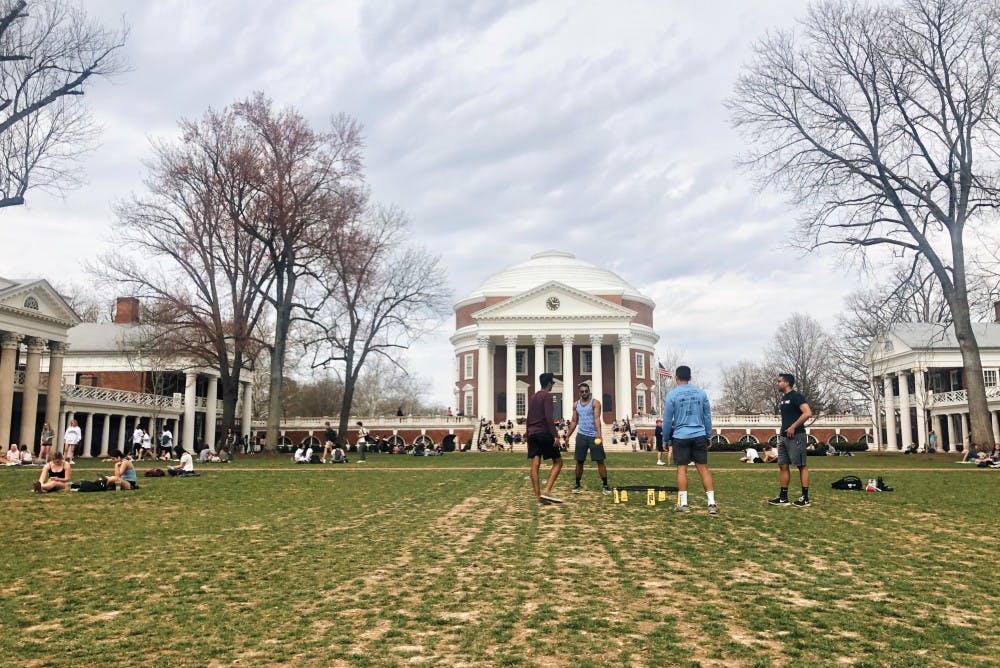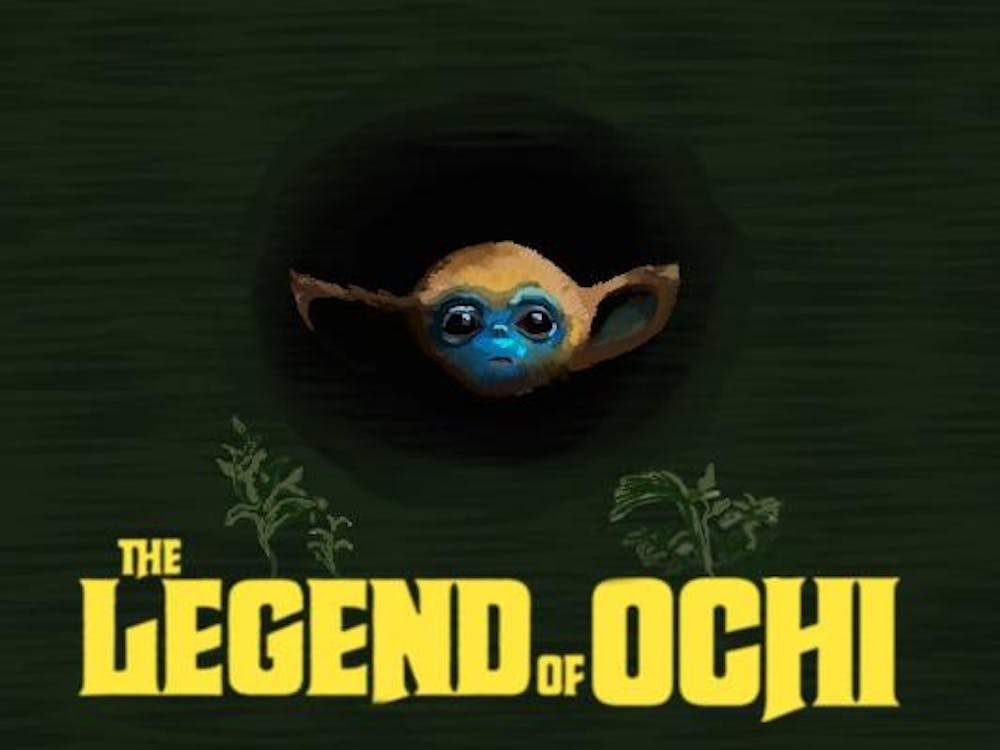I was lost, and everyone was wearing cobalt blue and lemon or aspen yellows in a beige town square during golden hour. This, of course, was a dream — but the colors were no strangers to my life, as I have been thinking about blues this spring season. Blues, yellows, lime greens and bright colors have painted the runways of fashion week and even Pantone has called it — vibrant is the new pastel.
Even though our moderate Virginia winter only brings a few snowstorms and days below the threshold of tolerably freezing, the winter felt long and spring could not come sooner. This past weekend was the third official weekend of spring, but it carried us into the season with a greater rush than the last. Once the weather breaches high 60s or better yet, 70s, spring is in full bloom and so too are students.
After dreaming about spring, its colors and the vibrancy April promises, I wondered, what will spring look like this year at the University? Will it echo the traditions of pastel button downs and Lily Pulitzer dresses worn on Easter or to Foxfield? Will it flourish with colors like the budding gardens? Will it be bright with neon and vibrant colors like the highlighters we color our books with?
On the Lawn, this past Friday, students sat in circles on blankets and rocking chairs scattered across the grass, which was still healing from the winter. At least three games of spikeball were being played simultaneously. Soccer balls, frisbees and footballs were thrown around, sometimes hitting those too caught up in their books or laptops to see it coming — myself included. Hammocks stretched between the trees as nestled students lounged two to three feet above the ground.
A youthfulness filled the fresh air as students played. While one student was wearing a full, calf-length fur coat, others were in shorts and casual clothing that coincided with the playfulness. Many young men were in their shortest shorts, hats and pastel tee-shirts. Many young women were in denim skirts, pastel athleisure and rompers, and everyone seemed to have gotten the memo that a lighter wash was the denim of choice.
But the Lawn is only one space where University students head to play in warm weather — others were scattered across Rugby and Grady on Saturday afternoon.
In the back parking lot of Pi Kappa Alpha was a layer of hay and a stage built for live music. In the front yard of a sorority satelite house was more hay and country music as students played tailgate games and drank beer out of red solo cups — and of course, sang along to that song about those same red solo cups. Denim, denim and more denim was paired with pastels, pastels and more pastels.
Down the road was another huge party with another loud band and a crowd of students in denim and pastels. Scrunchies of various shades and satin ribbons held up half-up-half-down hair-dos. White sneakers were coated in shades of gray from the mysterious muck that builds up around parties. But where are the vibrant colors?
If you closed your eyes and re-opened them without the context of knowing where you were, I wouldn’t be surprised if you mistook your surroundings for 1985. From the music to the Ray Bans to the hair tied with scrunchies, we are nostalgic for a time that is ridden with myths about America and about whiteness. These spaces of drinking, excess and power are narrated by silly stories and imaginations of college playfulness. These spaces, though, tell more stories than they let on.
In a March 27 lecture in his History of Literatures in English class, Prof. John O’Brien concluded a presentation about T.S. Eliot with a remark about the month of April. “April mixes our desire for the past and longing for the future,” he said.
What about spring, then, beckons our longing for a time that we, as a generation, have never known? What is it about the 1980s that we, as a student body, constantly revisit?
At times, our fashions tell more about our cultures than do our words. So when the spring fashion turns to nostalgia, what stories are our clothes really telling? In 1984, the Virginia basketball team made it to the final four of the NCAA tournament. In 1984, Gov. Ralph Northam wore blackface. In 1980, Attorney General Mark Herring wore blackface — at U.Va.
What started with questions about spring ended in questions about identity, nostalgia and history. What we wear tells stories and those stories require settings — and those settings are the spaces in which we exist. Nostalgia for the 1980s cannot exist in these spaces without a full understanding of the era and its history of oppression, inequity and nationalism. Nostalgia is blinding and, more often than not, hinders the required reckoning as it paints a portrait of the past through a rose colored lens.
As spring enters full bloom, how will our fashions change? How can we use the observations of our fashions in the context of our spaces to understand the realities of this place in which we exist?
A scrunchie is more than a scrunchie and those Adidas sneakers are more than just sneakers — they are signifiers and symbols of a much larger story.







